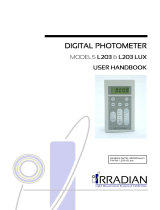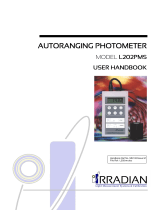Table of contents
1 Introduction.................................................................................................................................................................. 4
2 General information......................................................................................................................................................4
2.1 Photometric values................................................................................................................................................4
2.2 Factor value according to the light sources.............................................................................................................6
2.3 Order of magnitude of Lux according to applications..............................................................................................6
3 Operating principle........................................................................................................................................................7
3.1 Keyboard presentation...........................................................................................................................................7
4 Setting.......................................................................................................................................................................... 8
4.1 Screen control.......................................................................................................................................................8
4.2 About................................................................................................................................................................... 8
5 During measurement.....................................................................................................................................................9
5.1 Range...................................................................................................................................................................9
5.2 Illuminance........................................................................................................................................................... 9
5.3 Averaged illuminance............................................................................................................................................9
5.4 Relative illuminance............................................................................................................................................10
6 Running informations.................................................................................................................................................. 11
6.1 Over-range..........................................................................................................................................................11
6.2 Power source...................................................................................................................................................... 11
7 Maintenance...............................................................................................................................................................11
7.1 Servicing............................................................................................................................................................. 11
7.2 Regular checking.................................................................................................................................................11
7.3 Batteries replacement – adaptors.........................................................................................................................11
8 Main specications......................................................................................................................................................11
8.1 Range details...................................................................................................................................................... 11
8.2 Specications...................................................................................................................................................... 12
8.3 Standard reference..............................................................................................................................................12
9 Delivery and packaging...............................................................................................................................................12



















